Juliet Collins: Embroidering Melbourne
Born in Scotland and educated in Edinburgh, Juliet D Collins has a jovial Scottish accent and the personality to match. For the last 14 years she has lived and worked in Melbourne.

Top of Bourke is from Juliet’s Melbourne city sketch collection.
Initially, Juliet moved to Sydney, hoping to be closer to her family, but after a few years decided to settle in Melbourne. Juliet is inspired by Melbourne’s atmosphere, and as such, has made an entire series around the city’s laneways and vibrant culture. “The laneways for me just kind of sum up what is great about the atmosphere. There’s a sense of structure… with this thriving mass of humanity.”

Juliet’s pieces start from a pencil sketch onsite in the city that she later embroiders and collages with fabric.
All of Juliet’s city pieces start out as sketches, completed while out and about in Melbourne. Like many Melbournians, she often enjoys a coffee in the Degraves St area while she draws. She always tries to “portray in quite a spontaneous and experiential way the experience of being human.” For Juliet, it is important to create initial, spontaneous sketches and later work them into a more finished piece, so that she can truly capture the essence of the moment while involved in it herself.

Juliet has amassed quite a collection of fabric scraps to layer in her work.
Juliet’s Melbourne series is a combination of many different mediums. They start as drawn sketches, which she embroiders with layers of fabric scraps. Once she’s satisfied with this progress, she’ll turn towards other mediums to provide final touches and details, including pencil, water-soluble crayons, chinagraph, charcoal, oil pastel, ink and gouache. Really, no medium is out of bounds.
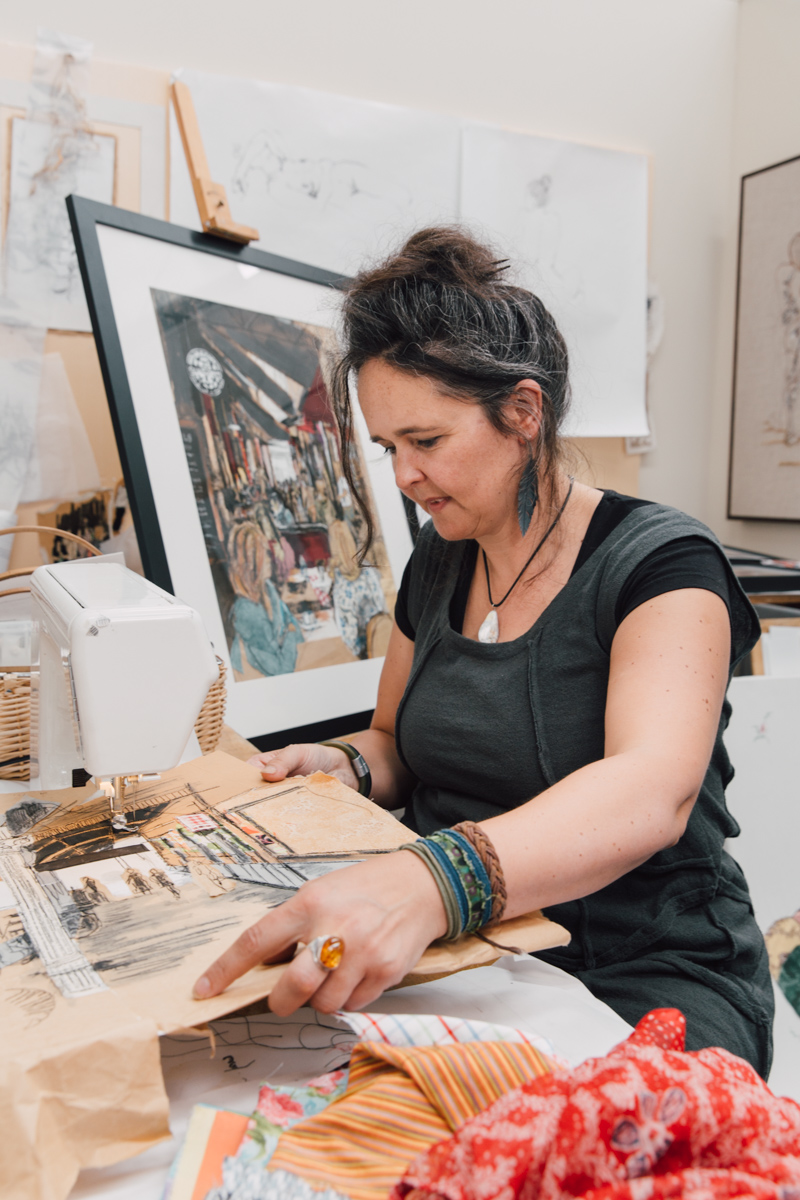
While her studio space may be on the small side, keeping her materials sorted and tidy helps give her space to work.
Since discovering freehand machine embroidery about a decade ago, Juliet has not looked back since. The technique allows her to embrace both the textural, structural nature of sculpture, which was her focus during her art degree, as well as the free-flowing spontaneity of a later love: life drawing. “I began by turning my life drawings into [thread] sketches, and from there [the thread medium] has evolved into other drawings.”

Juliet holding one of her framed city sketches.
Each piece can take a while, but bigger pieces pose more of a challenge. Because the length of her sewing machine limits how much space she has to work, larger pieces have to be working in pieces and then stuck together later. This adds an element of construction, and also requires some planning. “Going forward, I really want push this way of working… to perhaps bring in more sculptural elements. Perhaps work on wood but also have the stitched paper.”

One wall of her studio is allocated to little bits and pieces that inspire her, as well as some of her sketches.
“I constantly feel… that I’m balancing structure and chaos.” A piece isn’t finished until Juliet feels she has the balance correct, which she feels is a direct reflection of the city’s equally structured chaos.
At any one time, Juliet tends to be working on many different projects, and often affords each one a whole day. She’ll also spend a couple of days per week creating smaller pieces for her market stall, and devotes another couple of days to her city sketches. “I’m a lot more messy when I do that work, so it’s good that I separate the two.” She also aims to keep one day per week aside to work on more experimental pieces, where she can explore new ideas and techniques.
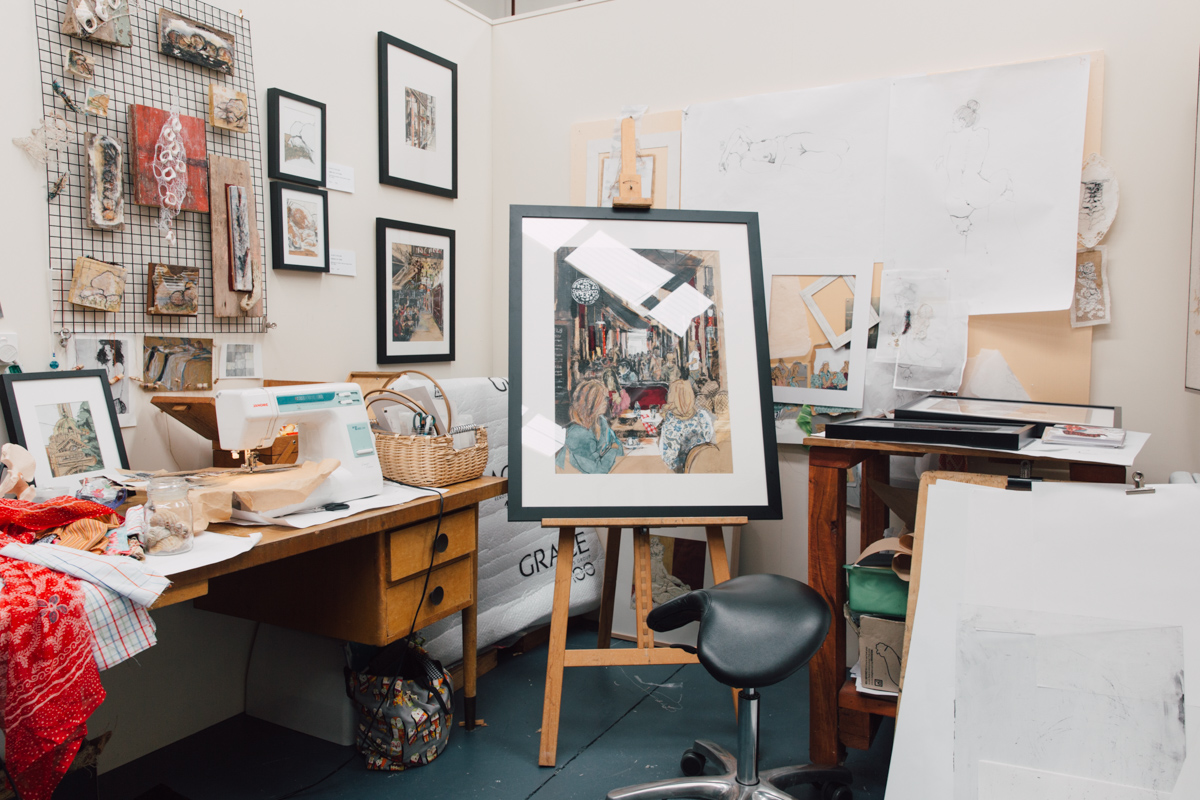
Inside Juliet’s studio space. It’s one of many inside a shared space in Melbourne.
Among Juliet’s many inspirations are the works of artists such as Klimt and Egon Schiele. She’s also influenced by traditional Japanese woodblock prints and credits Annemieke Mein as a textile artist whose work has had an impact on her.
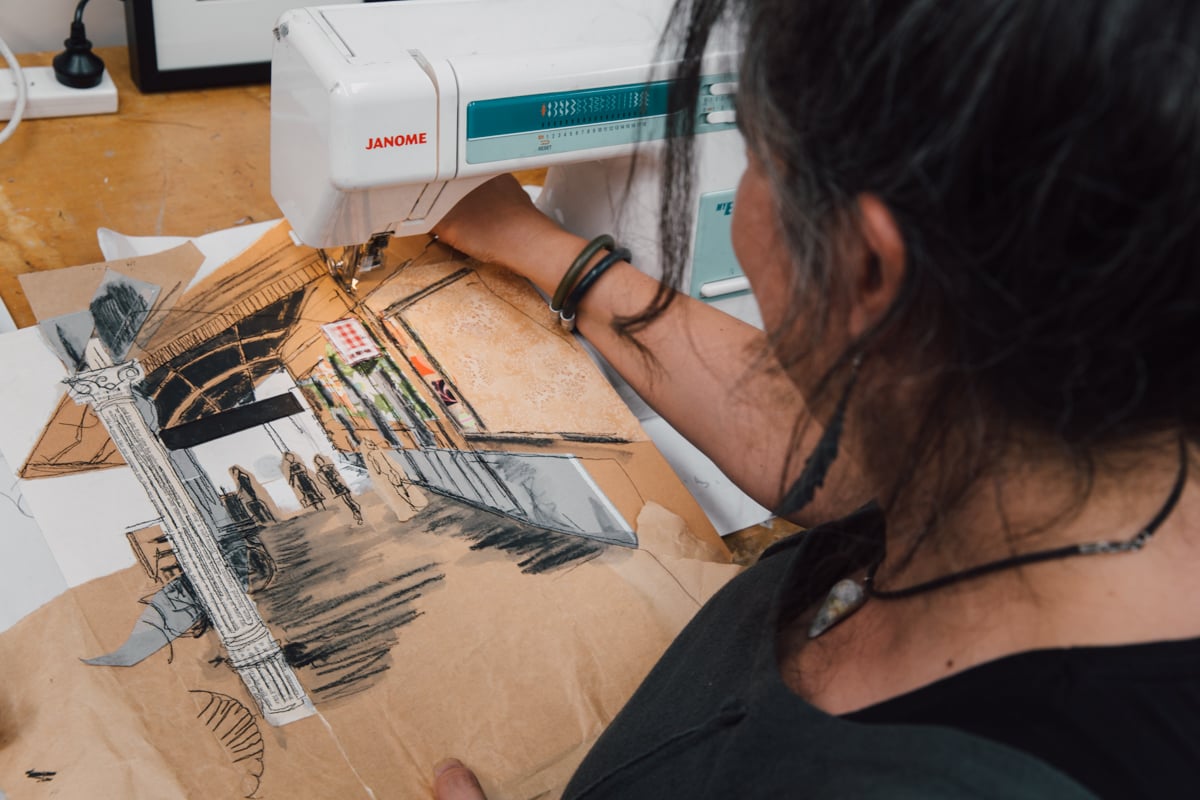
“I really like this machine. I’m attached to it.” While Juliet’s sewing machine has its limits, she loves it too much to purchase another.
What Juliet loves most about life as an artist is “the excitement when I’m in that creative flow. When I’m exploring and developing new things. Accidents and mistakes happen, but usually they’re not mistakes at all – they’re new discoveries.”

Juliet has a large collection of thread, which is divided into warmer and cooler colours.
In the future, Juliet is hoping to explore linocuts as another quite structural medium. For her, 2017 was a big year for exhibiting, and 2018 is going to be a year to focus on developing her work.
Watch the video of our studio chat below and click here to see Juliet’s profile.

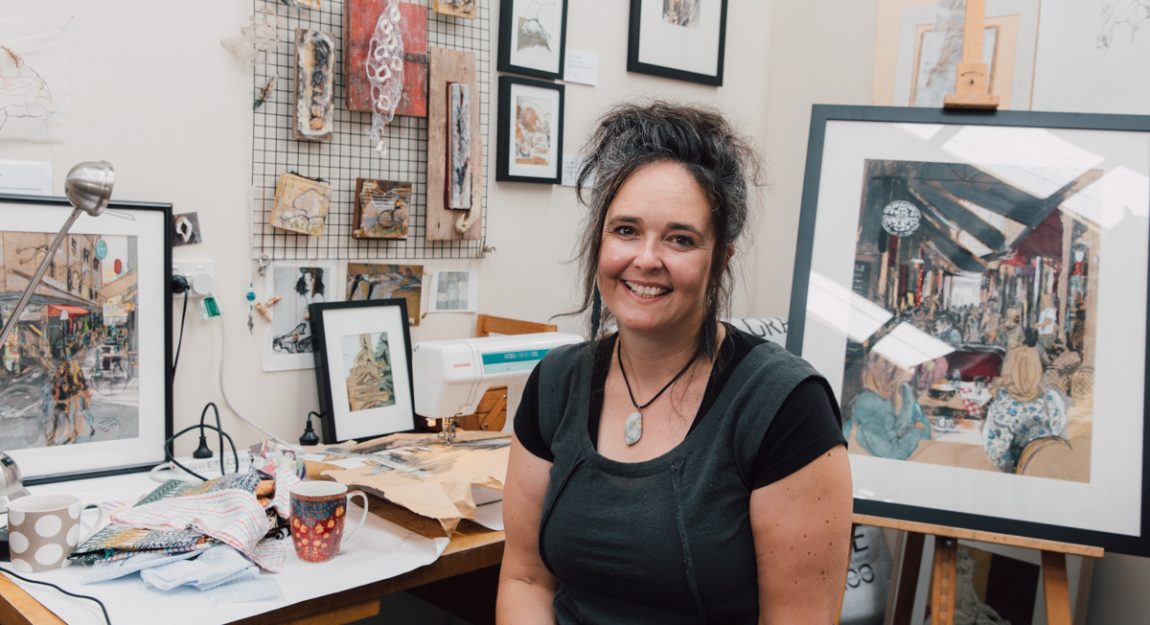

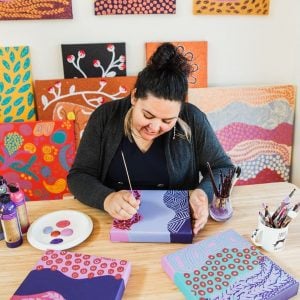

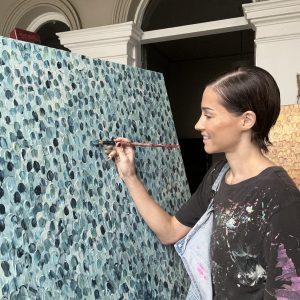
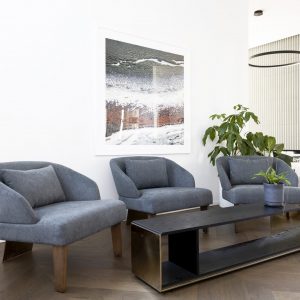
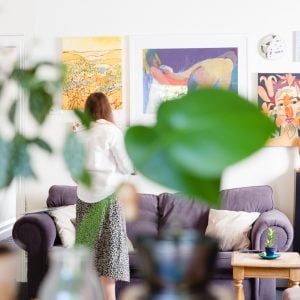






Stunning work Juliet. Very interesting mixed media technique. I’m sure Melbournians will clamber for one of your pieces.